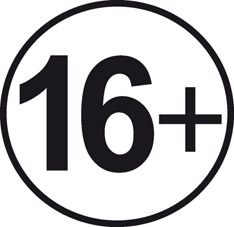Контакты Contacts
Почтовый адрес: Россия, 173003, г. Великий Новгород, ул. Б. С.-Петербургская, 41, ауд. 1308, Центр развития публикационной активности.
Тел.: 8 (8162) 33 88 30 доб. 2294;
Факс: (8162) 97 45 26.
E-mail: eNotes@novsu.ru
Postal address: Russia, 173003, Velikiy Novgorod, Yaroslav the Wise Novgorod State University, B.Sankt-Peterburgskaya St, 41 Bldg., 1308. Editorial Office.
Tel. (8162) 33-88-30 ext. 2294
Fax (8162) 97 45 26
|
|
|
Гаврилов А.К. (Gavrilov A.K.)
Хоругвь у славян и прагерм. *khrungo
Происхождение слова хоругвь засвидетельствовано в старослав. языке с XIв. как хорѫга, -гъве для перевода греч. σκῆπτρον (‘скипетр, жезл’) и представлено как в славянских, так и в балт. языках, напр. лит. karingas или польск.chorągiew и chorązy, откуда, опосредованно, русск. ‘хорунжий’. Со времен научной разработки истории славянской лексики были высказаны различные идеи о происхождении этой по всей видимости заимствованной лексемы, в особенности версии германская и восточная (алтайско-монгольская или собств. тюркская). Учитывая мощное влияние Византии на славянство, можно было начать обзор отсюда, но источника изучаемой лексемы здесь, как будто, не обнаруживается. Мысль о монгольском происхождении лексемы, к которой склонялся М.Фасмер, не утратила своего влияния, хотя вызвала профессиональную критику со стороны ориенталистов; не убеждает и тюркская версия Ф.Миклошича. Что касается германского происхождения лексемы (В.Ягич, Ф.Ф.Браун и др.), то она представляется не только правдоподобной, но и вероятной, так как ее можно подкрепить лингвистическими, культурно-историческими и «реальными» соображениями: древко с воинским значком (готск. hrugga) живет и поныне в германских языках в знач. ‘палка, шесток’ и т. п.; отсюда в соврем. нем. Runge в смысле ‘спица в колесе’, англ. rong. Характерно, что и вошедшее в употреблении в западноевропейских языках обозначение воинского, употребительного в кавалерии «значка», со временем принимает, как и «хоругвь» на прицепленных к древку поверхностях христианские символы, как это видно на позднеантичных штандартах. Франц. gonfalon также заимствовано из языка германцев <*gundfano, где второй элемент тождествен современному нем. Fahne. Воинственность и вера выступают тут вместе в связи с этим меняющим свой облик и содержание предметом и создают для когда-то простого названия вещи значение символа и атмосферу сугубой святости.
Ключевые слова: хорѫга, -гъве; хоруг(о)вь, chorągiew, хорунжий, хорунка
The Russian хоругвь and Germanic hrugga
The origin of the word хоругвь (engl. standard) is witnessed in the Old-Slavonic since XI c. as хорѫга, -гъве to translate greek σκῆπτρον (‘sceptre, rod’). It is to be found in Slavic as well as Baltic languages, so in the Lithuanian karingas or Polish chorągiew and chorązy, hence Russian ‘хорунжий’. There are different theories about the source of this presumable loan-word. The most convincing patterns of the provenience are Germanic and Oriental, namely (a) Altaic — Mongolian; or (b) Turkic. Taking into account the massive influence of Byzantium on the Slavs, the quest began with the language and culture of Byzantians, but despite old contacts in war and commerce leaving many tracks in the Slavic lexicon, no traces of some Greek word seem to be left to be responsible for хорѫга. The idea of a Mongolian origin of the word (oroŋgγo / oruγga or urungu should have meant something like ‚flag‘), supported by M.Vasmer, did not lose its influence till today, in spite of the substantial criticism from the part of specialists in Altaic languages (esp. the appearance of initial ‘h’ provokes doubts as well as the absence of direct contacts with Mongolians). The Turkic version does not seem convincing as well. Provenience from the Turk kujruk / kurjuk (cp. a Modern Greek loan-word κουριοῦκα, Russian курдюк) denoting ‚fat tail of a sheep‘ — an object scarcely apt to introduce notions associated with order and honour. As to the Germanic provenience it is still supported by some scholars following V. Jagič, F. Braun et al.), this theory seems not only reasonable, but even probable in the light of linguistic, cultural and historical circumstances: reconstructed Proto-Germanic *khrungo and attested Gothic hrugga, subst. fem., denoting crook or staff or shaft still live in Germanic languages quite content with the same or similar meanings (German Runge or English rong). The initial element ‘h’ is on its place in the (presumed) loan-word хорѫга while in Germanic dialects it fell away; it is the following vowel which makes the problem now, presumably while it was convenient to have a glide between this consonant and the liquid following it (Tamatarcha, cp. Тьмуторокань). Over time some Christian symbols appeared on the linen fastened to the wooden staff of the military sign, esp. in cavalry (cf. хорунка in the Cossacks cavalry), which gathered armed folk around the chief and / or centre of the group, as one can see on French gonfalon < Germanic *gundfano, where second element comes from German ‘Fahne‘. After the proper use on the field of honour, the object could be kept in the church, receiving in many respects the sacrosanct meaning. Thus, it not only begins to signify something holy but becomes a symbol of holiness itself: war and faith dance together within this changing object and the word denoting it.
Keywords: old-slavic хорѫга; russ. хоруг(о)вь, polish chorągiew; хорунжий, хорунка
https://doi.org/10.34680/2411-7951.2020.7(32).7
← →
Ссылка на эту статью: Гаврилов А.К. Хоругвь у славян и прагерм. *khrungo [Электр. ресурс] // Ученые записки Новгородского государственного университета. 2020. № 7(32). URL: https://portal.novsu.ru/univer/press/eNotes1/i.1086055/?id=1681346
Gavrilov A.K. The Russian хоругвь and Germanic hrugga. Memoirs of NovSU, 2020, no. 7(32). Available at: https://portal.novsu.ru/univer/press/eNotes1/i.1086055/?id=1681346
Документы

Свидетельство о регистрации (548 КБ) |

Заключение экспертного совета (80 КБ) |

|
Информация
 |
 |
Это произведение доступно по лицензии Creative Commons «Attribution-NonCommercial» («Атрибуция — Некоммерческое использование») 4.0 Всемирная.
Регулярные выпуски журнала выходят ежеквартально, не менее 4 раз в год. Возможен выход специальных выпусков журнала.

